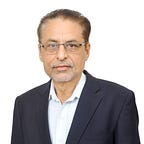BRICS: A Growing Power in World Politics
Recent Development
BRICS organized its 15th annual summit in August 2023 in Johannesburg, South Africa. In this summit apart from the five founding members: Brazil, Russia, India, China and South Africa, many other groups of countries were also invited. The invited groups included African Union, Arab Maghreb Union, Organization of Islamic Cooperation etc. South African president Cyril Ramaphosa chaired the meeting. All together about 67 countries were invited to participate in this meeting. As of now BRICS represents the will of about 42% of world population and it constituted more than 26% of global GDP. It is said that Saudi Arabia, Egypt, The United Arab Emirates, Iran and Ethiopia have already joined BRICS. Although, Argentina has refused to become member but many other countries including Pakistan want to join this emerging group of powerful and developing countries seeing the scope of their own economic and political benefits in the approaching multi-polar world.
Evolution of BRICS
Evolution of BRICS is a significant development of the post — Cold War Politics. As USSR disintegrated, the equation of world politics also started changing. In the shifting global politics along with technological and economic development, newly emerging regional powers of Asia, Africa and Latin-South America got an opportunity to create new possibilities for improving their position in world politics. The acronym BRICS stands for five power centers of the contemporary world such as Brazil, Russia, India, China and South Africa. It can be also called an organization of developing countries as most of these countries are not fully developed countries. Out of these countries Russia has already been a major power as it was the main constituent of the former Soviet Union. Even today Russia is recognized as a big player of power politics on the basis of its nuclear capabilities and huge infrastructure. China has already been declared as second emerging power which can even pose a challenge before the present so-called hegemon: the U.S.A. Many of these countries are also members of NAM, G20, and regional organizations of the world. For example, Russia and China are not only major power but also permanent members of the Security Council. India is the largest democracy and also a leading economy of the world. As far as other countries of BRICS are concerned, these are representing rest of emerging and developing countries and making it geographically vast and broad movement in the direction of growing possibility of a multi-polar world after the end of the Cold War era in 1991.
Formation
The term BRIC was in fact invented in 2001 by a famous British economist Jim O’ Neill, a former chairman of Goldman Sachs groups which is an American multinational company. He described the BRIC nations as emerging power of the world. After that in September 2006 the first BRICS ministerial meeting was held in New York City on the proposal of the Russian president where they had gathered for general debate of the U.N Assembly. Again, At the initiative of Russia a meeting of foreign ministers of BRIC countries was held at Yekaterinburg in Russia. However, finally the first formal BRIC summit took place in Russian city of Yekaterinburg only in June 2009. Later when South Africa was included in this organization during the meeting of the foreign ministers of BRIC nations in New York in September 2010, it was re named as BRICS.
Objectives
Main purpose of BRICS is to cooperate among themselves and intensify efforts in the direction of mutually beneficial, equitable and sustainable development. It aims at creating an equitable and fair world order in which multilateralism and security should be the basis of its functioning. It wants that all of its members should work together for promoting each — others interests which will ultimately lead to their economic growth and formation of a better world. They want dialogue among them in an open and transparent way that can create a possibility of harmonious world with peace and prosperity. The first BRIC summit in 2009 focused mainly on issues such as reform of the global financial institutions but gradually it emerged as a more effective instrument of economic, political and social transformation in the upcoming multi spolar world order.
Modus Operandi
BRICS countries organize their summit annually. In these summits they set their priorities and decide for their further actions. Different member country become president of this organization for a year. So far, they have completed 15 annual summits since 2009. Their leaders meet generally on the sidelines of meetings of G20 and UN General Assembly etc. It has developed three main pillars of cooperation such as Political and Security cooperation, Economic and Financial cooperation and People to People cooperation.
Conclusion
BRICS was initially formed as an intergovernmental body and a loose club of few emerging nations of Asia, Africa and Latin America but with the passage of time it assumed a mightier face. With the joining of many countries it is bound to play a significant role in international politics. In October 2024 it will chaired by Russia which may further strengthen this International body and influence the balance of power in the world.
